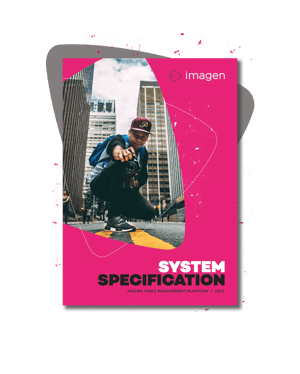Imagen gives you the tools to manage media workflows in one central platform. Ingest content via live stream feeds or upload and enrich files ready for distribution. With granular access controls, a custom - branded UI and platform analytics, Imagen makes your content ready for delivery to the end - user customer

A suite of powerful, highly customisable media management features enabling sports, media and enterprise organisations to intelligently manage, activate and unlock the value of their content






Our knowledge base has hundreds of articles, scribes and how-tos created to help you get the most out of the Imagen platform. We’re always adding new features and enhancements so check it out!

We’re always releasing new and exciting features. To make sure you’re not missing out on the latest, bookmark our Product Updates for the future.

Discover the ins and outs of the Imagen platform, from ingesting live feeds to creating custom built delivery workflows , there’s always something new to read about.

Imagen works with your tech stack, encouraging you to integrate with industry-leading software. Have a look at how our customers have built Imagen into their network of platforms.

Find out how our customers are using the latest in AI. Automating the process of content ingest, discovery, distribution, reuse and more.

Our in-house experts will walk you through everything you need to know based on your needs.